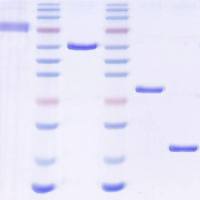Induction of Programmed Cell Death with an Antisense Bcl-2 Oligonucleotide
互联网
433
Limited advances have occurred in lung cancer prevention and treatment (1 ), which has necessitated the investigation of other means of intervention.As cancer is a disease of altered cellular homeostasis and genetic damage, programmed cell death (PCD) has gained increasing importance as a physiologic mechanism that has relevance to cancer-treatment strategies (2 ). Dysregulation of PCD in lung cancer renders these cells resistant to chemotherapeutic agents that induce this process (3 ,4 ). Therefore, genetic manipulation of PCD regulatory genes may restore the altered homeostasis in these cells and permit these genetically damaged cells to enter PCD.A known regulator of the PCD pathway is Bcl-2, a protein capable of suppressing cell death, which is upregulated in human premalignant and malignant lung lesions (5 ,6 ). Bcl-2 has been localized to the nuclear membrane, the endoplasmic reticulum, the cytosol, and the outer mitochondrial membrane (7 –11 ). The exact molecular mechanisms by which Bcl-2 inhibits PCD have not been unequivocally established.Initial results indicate Bcl-2 inactivates inducers of PCD, such as Bax, through heterodimerization and that it is the ratio of Bcl-2, or other functionally similar genes, to the expression of PCD inducers that determines whether a cell will undergo PCD (12 ,13 ).When Bcl-2 heterodimerizes with Bax within the outer mitochondria membrane it forms an ion channel, which is functionally different from the ion channel formed by Bax homodimerization (14 ,15 ).









